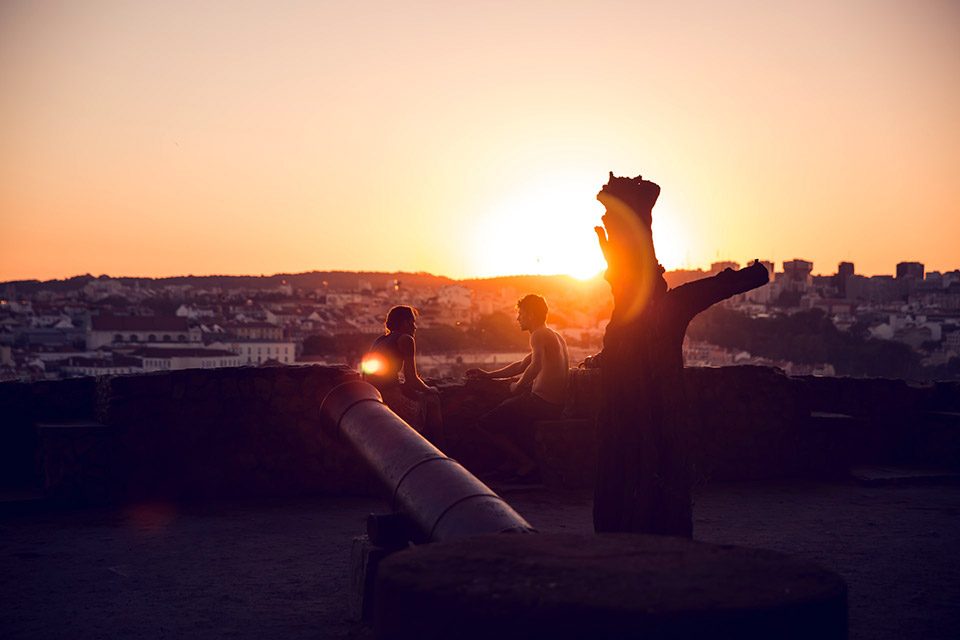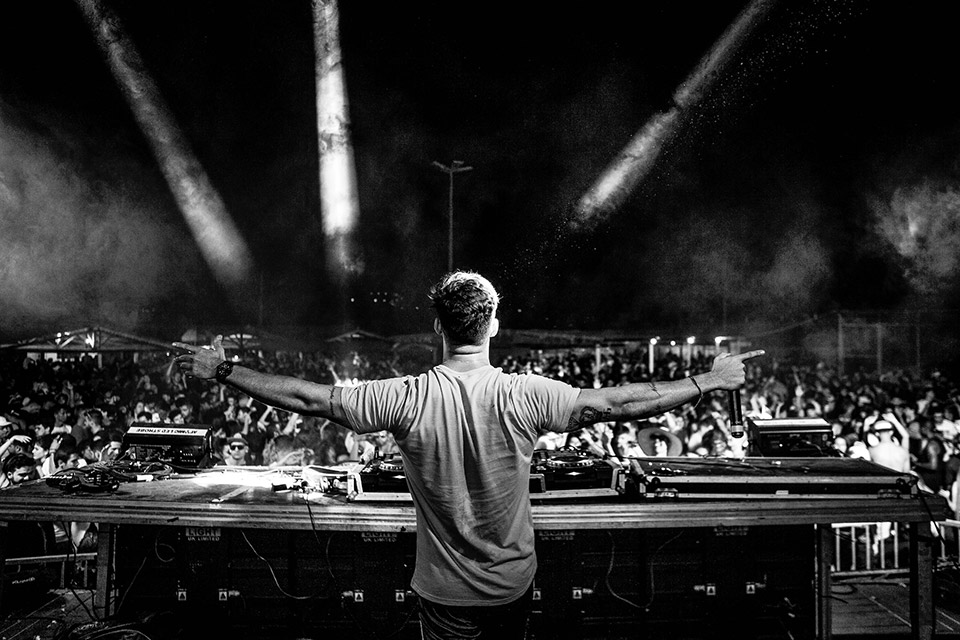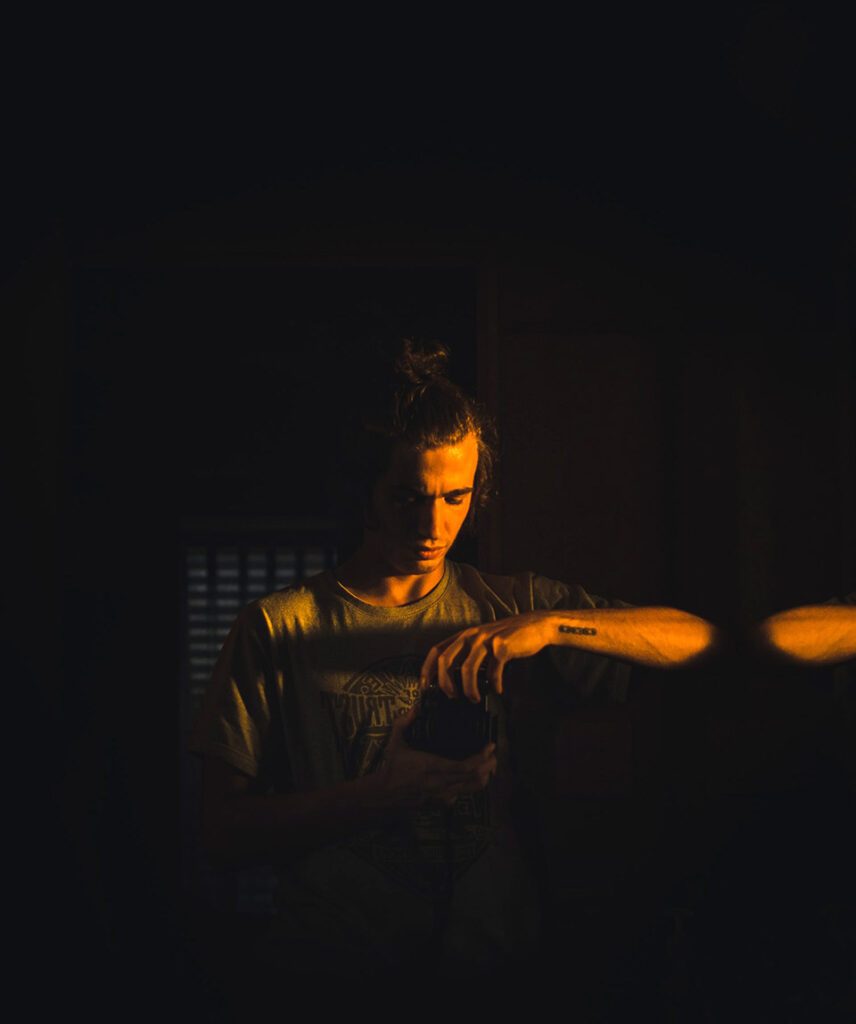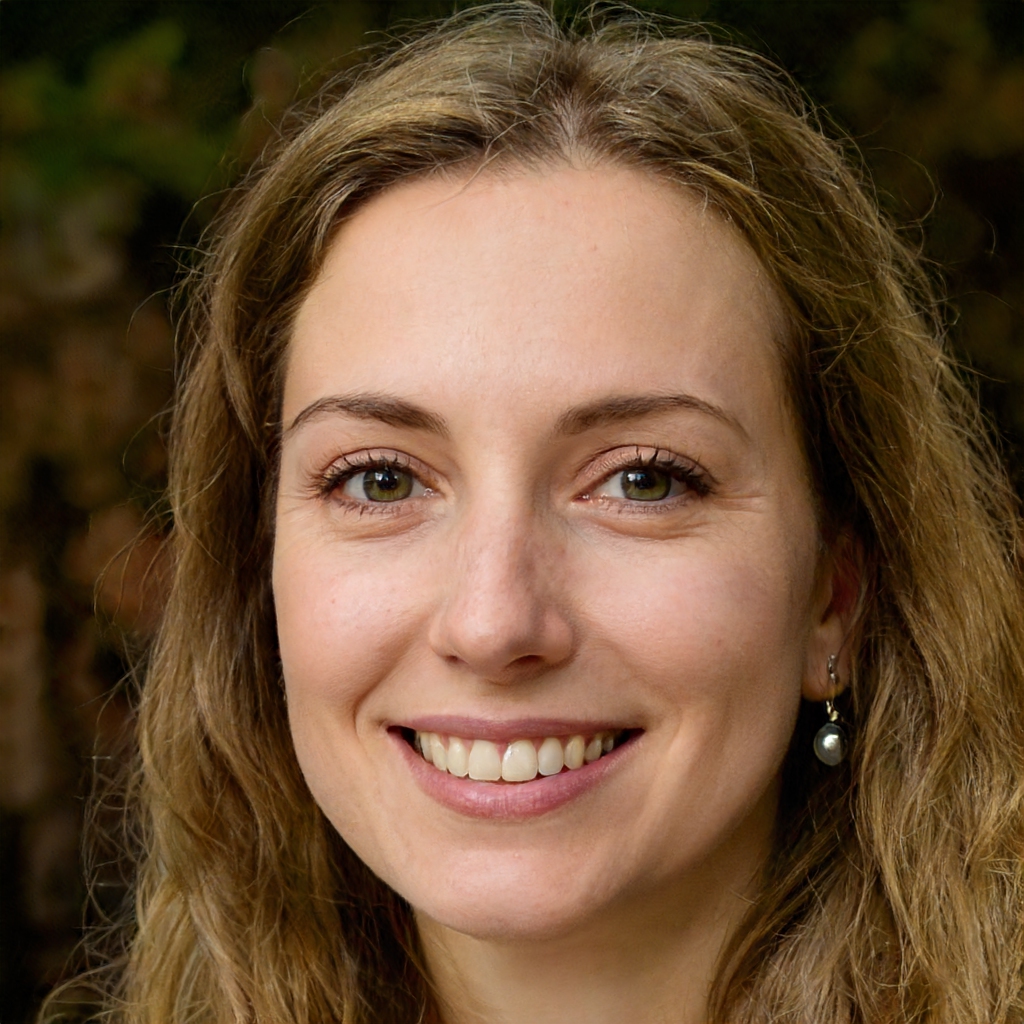With the Canon EOS M50, you can shoot in pretty much any lighting condition. But, if you want to make the most of your low-light shots, you’ll need a good lens. Here are some of the best low light lenses for the Canon EOS M50:
- Canon EF-M 22mm f2 STM Compact System Lens
- Canon EF-M 32mm f/1.4 STM Lens
- Sigma 16 mm f/1.4 (C) AF DC DN
- 30mm F1.4 DC DN | C for EF-M Mount
- Sigma 56mm F1.4 DC DN for EF-M Mount
- Neewer 35mm F1.7 Large Aperture APS-C Manual Focus Prime Fixed Lens
1. Canon EF-M 22mm f/2 STM Lens

I am an experienced wedding photographer and mostly take photos indoors and in other dim locations.
I can say that this is one of the best lenses that Canon has to offer. The image quality is fantastic, and the autofocus is really fast and accurate.
Using the Canon EF-M 22mm f/2 STM Lens, I can shoot in low light conditions without any issues at all. The build quality is very good, and the lens is very compact and lightweight.
It is a good upgrade from the kit lens and a great lens to have in your bag.
I would highly recommend this lens to anyone looking for good quality, fast, and accurate lens.
Features
The Canon EF-M 22mm f/2 STM is a wide-angle prime lens for Canon’s APS-C mirrorless cameras. It has a full-frame equivalent of 35mm which is suitable for a wide variety of shooting situations including landscapes, weddings, and portraits.
It has a fast maximum aperture of f/2, which is great for low-light shooting and for achieving shallow depth of field.
From my experience, the autofocus is fast and accurate, and the image quality is excellent.
The build quality is good and it feels solid and well-made. I also like this lens when shooting videos because of how light it is.
The STM focus motor is also quiet, making it a good choice for shooting videos.

Sharp Images
Even though it’s small and light, this lens produces very sharp images, even wide open.
The colors are accurate, and the contrast is very good. The images have a very natural look with the right amount of “pop” on them.
Superb Autofocus Speed
The autofocus speed of this lens is nothing short of amazing. It focuses very fast, which is great for shooting moving subjects.
When I tried shooting some video with this lens, I was amazed at how well it performed; the autofocus was incredibly fast and accurate.
The autofocus is very fast and accurate even in low light, and I have never had any problems with it. Moreover, the focus ring is very smooth, which is a plus!
It’s also easy to use, which is something beginners will appreciate.
Compact and Lightweight
It’s a tiny lens, weighing just 105 grams, which is ideal for travel. You can bring this lens anywhere you want. And I can definitely say that it’s pretty durable as well.
Conclusion
The Canon EF-M 22mm f/2 STM is a great lens for anyone looking for good quality, fast, and accurate lens. Its f/2 aperture is great for low light shooting and for producing good bokeh as well.
Pros
- Great image quality
- Compact and lightweight
- Quiet and fast AF
Cons
- It has some obvious vignetting when shooting wide open
- No IS and weather sealing
2. Canon EF-M 32mm f/1.4 STM Lens

This lens is a great option for Canon camera owners. The Canon EF-M 32mm f/1.4 STM is a small lens that works well in low light and has an aperture of f/1.4, which makes it great for portraits too! An aperture of f/1.4 is much more desirable than an f/2.8 when it comes to low light photography since it has a larger opening to let more light in.
The 32mm focal length (50mm in full-frame) allows you to get close to your subject without having to worry about getting into their personal space—just like with other standard and telephoto lenses.
Its low light performance is amazingly good and I have no problems using it in dimly lit environments.
Image Quality
The image quality is amazing and I think it is a bit sharper than the Sigma 30mm f/1.4 DC DN.
The lens is razor-sharp and has a beautiful bokeh effect. It performs well in low light situations and produces high-quality images that are crisp, clear, and full of detail.
I can say that the distortion and chromatic aberration (CA) are well controlled even when shooting at f/1.4. Stop it down to f/4 and you’ll see almost all those issues are gone.
The Canon EF-M 32mm f/1.4 STM has 7 circular aperture blades, which allows you to create soft and creamy backgrounds.

Design
The lens is very well constructed and has a solid feel to it. It’s not heavy, but it still feels like a quality lens.
The size of the lens is also good, which makes it perfect for street photographers who want to travel light. The focus ring has a nice smooth action and is easy to use even with one hand.
It looks “shiny” and smooth, but it’s not slippery to handle. Its front element is a bit smaller than most f/1.4 lenses which makes the Canon EF-M 32mm f/1.4 STM more compact.
Takeaway
The Canon EF-M 32mm f/1.4 STM is an amazing fast prime lens for low light shooting and portraits. It’s one of the best EF-M mount lenses that I have ever used. The only downside is it is more expensive than other fast prime lenses.
Pros
- Great design and build quality
- Outstanding low light performance
- CA is well controlled
Cons
- Priced higher than the competition
3. Sigma 16 mm f/1.4 AF DC DN

The Sigma 16mm f/1.4 DC DN Contemporary is a great lens for anyone who wants to get into astrophotography or night photography.
I tested this lens on my Canon M50 and was very impressed with the results. It’s a fast prime lens that’s perfect for low light situations. Like my Canon EOS RP, the Canon M50 is a good camera for astrophotography.
Wide Field of View
The 16mm focal length is perfect for astrophotography, and the fast aperture allows you to get more light into your camera sensor, which is key for night photography.
I was able to get some great photos of the Milky Way with this lens, and I was very pleased with the results. The lens is also great for landscape and architectural photography.
The wide angle of view allows you to capture more of the scene in front of you, and the fast aperture allows you to take photos in low-light situations without sacrificing quality.
Just be careful when you’re using this lens when taking portraits —the 24mm focal length (in full-frame equivalent) can make people’s physical appearance appear a bit distorted.

Build Quality
Like the Sigma 30mm f/1.4 DC DN, the Sigma 16mm has great build quality. It is smooth and has a nice finish that feels great to hold.
The lens is made out of plastic and doesn’t feel cheap at all, which is something that I appreciate.
The focus ring is smooth and has a nice resistance when turning it. It took me some time to get used to the manual focusing on my M50, but once I did it felt very natural.
And because of its wide angle and fast aperture, the downside of this lens is that it is a bit heavy. The Sigma 16mm f/1.4 DC DN Contemporary lens is quite long, but its weight isn’t too bad.
I like that Sigma decided to make the lens in such a way that it feels like a high-quality product and not cheap plastic.
Takeaway
Overall, I was very impressed with the Sigma 16mm f/1.4 DC DN Contemporary. It’s a great lens for anyone who wants to get into astrophotography or night photography, and it’s also a great all-around lens for landscape and architectural photography.
Pros
- A serious wide-angle lens for photographers
- Very capable for landscapes, astrophotography, and environmental portraits
Cons
- This focal length is not easy to use
- Longer and heavier than the Canon EF-M 22/f2 and Sigma 30mm
4. Sigma 30mm f/1.4 DC DN Contemporary

I’m a professional photographer, and I recently started using the Canon M50. I was using the Canon 6D before this and was quite happy with its performance.
But when I started using the M50, I noticed that the low light performance was not up to the mark. I did some research and found out that I needed a low light lens for the M50.
And Sigma 30mm f/1.4 DC DN was the best option available. It’s a standard lens and a very popular focal length among photographers.
Features
The Sigma 30mm f/1.4 DC DN is a great lens for my Canon M50. It is a fast prime lens that is ideal for shooting in low light conditions.
The lens has a fast aperture of f/1.4, which allows more light to enter the camera. And it definitely helps in getting better low light performance out of any cameras.
The lens is made of durable plastic and has a solid metal mount. It also comes with a lens hood, which is very useful in protecting the lens from scratches and bumps.
AF Speed
The Sigma 30mm f/1.4 DC DN focuses quickly, with only a little bit of hunting in the dark. The AF response is fast and responsive, with no lag at all when shooting still subjects.
I also have the Sony version of this lens and they are identical in terms of autofocus performance.
Image Quality
I love this lens because of its low light performance. It really does shine! Shooting wide open with the Sigma 30mm f/1.4 will make the old Canon m50 a lot sharper, especially at night.
The lens has a great bokeh, which is nice if you’re into taking portraits. It has the same sharpness as the Canon EF-M 22mm at f/2.
But you can even use a lower ISO because of its wider aperture.
Takeaway
Overall, I think this is one of the best lenses for Canon m50 cameras out there right now. It produces excellent image quality and sharpness even when shooting wide open (f/1.4).
Pros
- Great colors and contrast
- Razor sharp
- Amazing bokeh
Cons
- Tends to hunt a little bit in poorly lit areas
5. Sigma 56mm f/1.4 DC DN Contemporary

If we’re talking about portraits solely, this lens could be my #1 pick since its image quality is excellent. The Sigma 56mm has a very smooth bokeh, which is great for portraits because it helps separate your subject from the background.
But in my opinion, the 56mm (85mm in full-frame equivalent) can be quite long for general usage.
However, the Sigma 56mm f/1.4 DC DN is great for low light conditions. I tried using it indoors in a poorly lit room and I was surprised by the quality of the images.
The autofocus didn’t hunt at all, and it produced incredibly sharp images even when handheld.
Fast AF
These newer Sigma lenses are much better in terms of performance compared to their older siblings. I was really surprised at how good the Sigma 56mm f/1.4 was when shooting indoors, under artificial lighting.
It’s fast and accurate, with no hunting or hesitation. The autofocus was very snappy too.
Image quality
When it comes to low light photography, the Sigma 56mm f/1.4 DC DN is a good lens to use. It’s not perfect, but it can produce nice photos that are sharp and have good contrast.
The Sigma 56mm f/1.4 DC DN is a good lens to use for portraits.
It’s sharp and the colors are fantastic. I like the way it renders skin tones, especially when paired with my Canon M50 which has a natural color profile by default.

And when it comes to bokeh, oh boy, you’re in for a treat! It’s one of the best lenses I’ve ever used.
The Sigma 56mm f/1.4 DC DN produces lovely bokeh that’s quite pleasing to look at. It’s creamy and smooth, but not overly so that it distracts from your subject.
Takeaway
Sigma has made a great lens with the 56mm f/1.4. It’s probably my favorite portrait lens to use now that I’ve had a chance to play around with it. The image quality is fantastic, as are the colors and contrast.
Pros
- Creamy and soft bokeh
- Great performance in low light
Cons
- Not the most ideal focal length when shooting indoors
6. Neewer 35mm F1.7 Large Aperture APS-C Manual Focus Prime Fixed Lens

And lastly, we have this really affordable manual lens from Neewer.
The Neewer 35mm f/1.7 is a cheap manual-focus prime lens that has become a popular choice for photographers who want to experiment with portraits and low-light photography without spending too much money.
The lens only costs below $100, which makes it a great option for anyone who wants to get into the world of photography but isn’t sure if they’ll like it enough to justify the cost of purchasing more expensive equipment.
Features
It’s a fully manual focus lens hence the lower price and it’s a good lens for beginners to learn how to focus manually.
If you’re shooting static subjects, astrophotography, or making films, then autofocus doesn’t matter that much.
The Neewer 35mm f/1.7 has a helpful focus distance and DOF scale to guide you on what’s in focus and what’s not. The lens itself has a plastic body with a metal mount, so it feels like it’s built decently well for the price point.
Its focusing ring is smooth to use and the aperture ring clicks into place nicely.
Shooting manually is actually very enjoyable. My experience using the Leica M9 has taught me that manual focus is actually very easy and fun to do. So I encourage you to learn how to focus manually.
And with the help of Canon M50’s focus peaking function, it’s actually super easy to get the hang of.
Image Quality
When it comes to image quality, The Neewer 35mm f/1.7 is no slouch either. I was able to get some pretty sharp and vibrant images out of this lens, especially when shooting wide open.
The bokeh is pretty good too! It’s not on par with the most expensive flagship prime lens, but it’s better than most other lenses in its price range.
Low light shooting is really fast because of its fully manual capabilities and it lets me keep my ISO as low as possible. I was able to shoot in really dark places without any problems.
The lens coating works well, but it tends to flare out easily when shooting against the sun. I would recommend getting a lens hood for this lens if you shoot outdoors.
Takeaway
Overall, this is a really good lens for anyone who wants to shoot fully manual. It’s great for portraits and it’s fast enough to shoot in low light situations.
The only downside is that it can be difficult to use if you’re new to photography because of its manual nature.
Pros
- Affordable
- Great center sharpness at f/1.7
Cons
- Prone to flare

Emma Lucy is the Founder & CEO of Emma Lucy Photography. She has over a decade of experience shooting weddings and other intimate events. She also tests the latest digital camera bodies, lenses, analog cameras, and other gear from Canon, Nikon, Sony, and other camera brands. She is From London and currently lives in the United States of America, where she spends most of her time as a self-employed professional photographer and writer.
